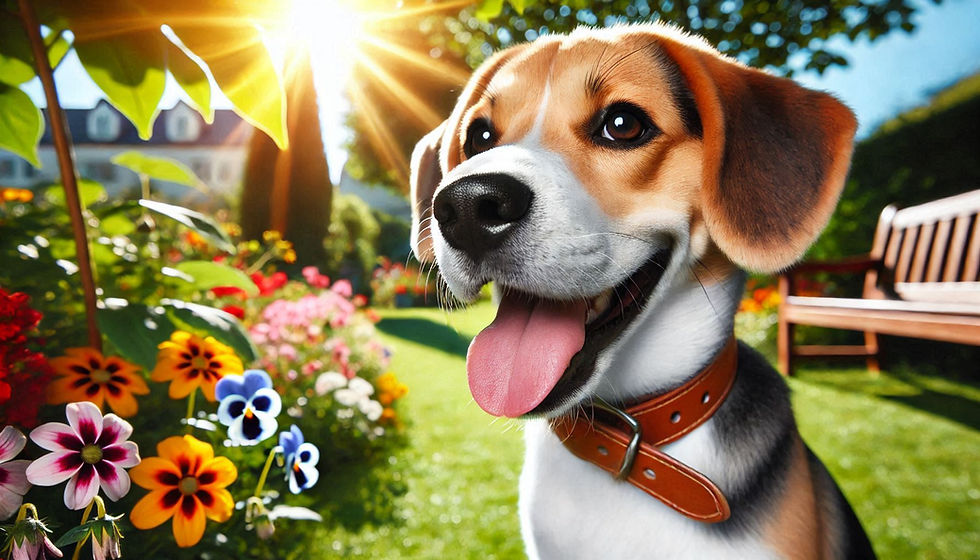How to Choose a Dog Trainer: A Guide to Finding the Right Fit
- Berk Kabaağaçlı
- 23 Oca
- 3 dakikada okunur
Training is an essential part of raising a well-behaved and happy dog. Whether you're addressing behavioral issues or teaching basic commands, a professional dog trainer can make the process easier and more effective. However, with so many trainers available, how do you choose the right one? This guide will help you understand what to look for in a dog trainer and ensure your furry friend gets the best training possible.

Why Hiring a Dog Trainer is Important
Dog trainers are professionals who specialize in teaching dogs and their owners how to communicate effectively. They use proven techniques to address issues like obedience, aggression, and anxiety. Hiring a trainer can:
Improve your dog's behavior.
Strengthen the bond between you and your pet.
Make your life easier by reducing stress caused by behavioral problems.
Key Factors to Consider When Choosing a Dog Trainer
Not all dog trainers are the same. To find the right fit, consider the following factors:
1. Qualifications and Experience
Look for trainers with certifications from reputable organizations such as:
Certification Council for Professional Dog Trainers (CCPDT)
International Association of Canine Professionals (IACP)
Karen Pryor Academy (KPA)
Experienced trainers are more likely to have handled a variety of breeds and behavioral issues, which can be invaluable in tailoring the training to your dog's needs.
2. Training Methods
Ask about the trainer's approach to training. Positive reinforcement—rewarding good behavior with treats, praise, or toys—is widely regarded as the most effective and humane method. Avoid trainers who use harsh methods, such as physical punishment or intimidation, as these can harm your dog both physically and emotionally.
3. Specializations
Some trainers specialize in certain areas, such as:
Puppy Training: Perfect for socialization and teaching basic commands.
Behavioral Modification: For addressing issues like aggression or separation anxiety.
Sports and Advanced Training: For agility, obedience competitions, or specific skills.
Choose a trainer whose expertise aligns with your dog's needs.
4. References and Reviews
Ask for references from past clients or read online reviews. Positive feedback from other pet owners is a good indicator of a trainer’s reliability and effectiveness. Additionally, look for video testimonials or observe a training session if possible.
5. Compatibility
It’s essential to find a trainer who clicks with both you and your dog. Schedule an initial consultation to assess their communication style, professionalism, and how well they interact with your pet. Your dog should feel comfortable and safe with the trainer.
6. Cost and Commitment
Training fees can vary widely depending on the trainer’s experience, location, and program type. Be upfront about your budget and discuss the expected duration of the training. Keep in mind that cheaper doesn’t always mean better, and investing in quality training can save you money in the long run by preventing future behavioral issues.
Types of Dog Training Programs
Depending on your preferences and your dog's needs, you can choose from different types of training programs:
1. Group Classes
Ideal for socialization and basic obedience.
Affordable and allows your dog to interact with other dogs.
Best for dogs without severe behavioral issues.
2. Private Training
One-on-one sessions tailored to your dog's specific needs.
Great for addressing behavioral problems or advanced training.
Typically more expensive than group classes.
3. Board-and-Train Programs
Your dog stays with the trainer for intensive training.
Convenient for busy owners but requires follow-up work to maintain results.
Ensure the facility uses humane methods and allows regular updates.
Questions to Ask a Potential Dog Trainer
Before making a decision, ask the following questions:
What certifications do you hold?
What training methods do you use?
Can you provide references from past clients?
Do you have experience with my dog’s breed or specific issues?
What does a typical training session look like?
How long will it take to see results?
Red Flags to Watch Out For
Be cautious of trainers who:
Refuse to discuss their methods or credentials.
Use aversive tools like shock collars or prong collars.
Guarantee quick results (training takes time and consistency).
Show signs of impatience or frustration with your dog.
Conclusion
Choosing the right dog trainer can make a world of difference in your pet’s behavior and your overall relationship. By considering factors like qualifications, training methods, and compatibility, you can find a trainer who meets your needs and ensures your dog receives the best care. Remember, training is a team effort that requires commitment from both you and your dog. With the right guidance, you’ll be well on your way to a happier, more obedient furry friend.



Yorumlar